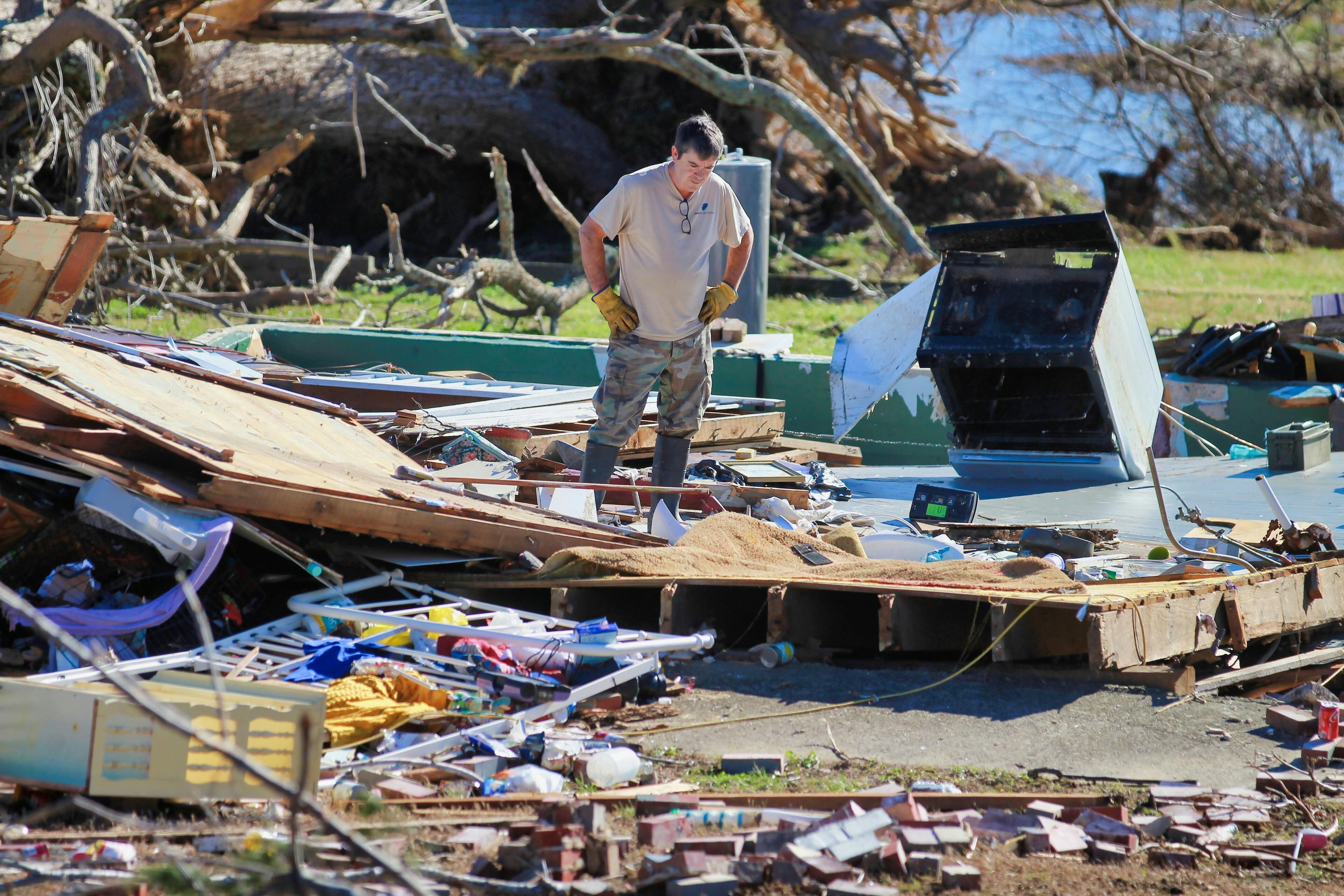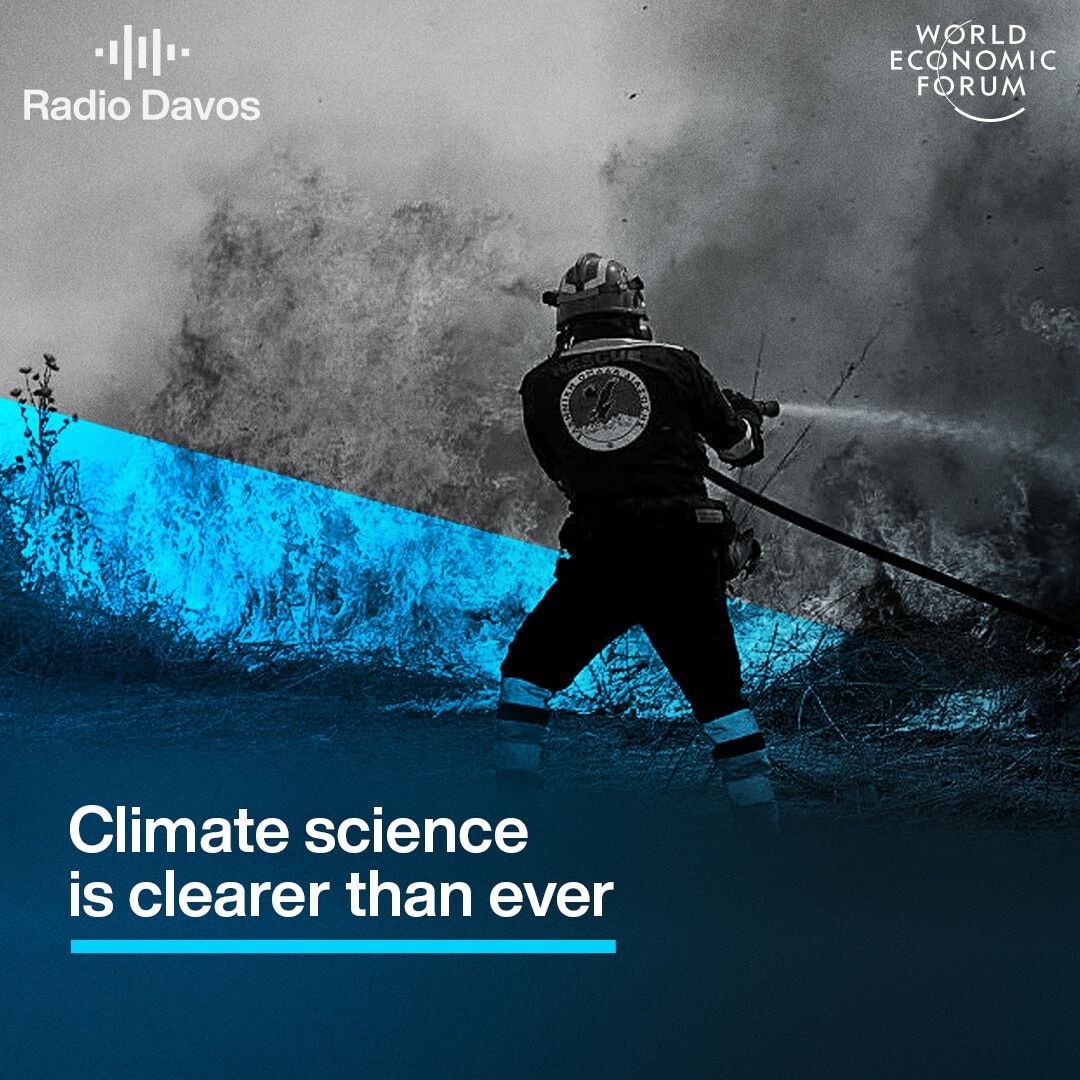How to “blink responsibly” on unrealistic climate goals – and set a course for action

Confusion over climate goals has backed governments and companies into a corner with their emissions targets.
Image: Unsplash/Viktor Kiryanov
Stay up to date:
Climate Crisis
- A damaging gap has opened up between climate aspirations and goals, and actual actions.
- “Blinking responsibly” can allow governments and companies to credibly revise their emissions targets and take meaningful action.
- Successful readjustment involves clarity about goals that distinguish between airy aspirations and actual standards.
At the mid-point in the “decade of action” on sustainable development, growth in the emissions that cause climate change is slowing. Despite that good news, the world remains way off track to stop warming at 1.5°C or 2°C. A yawning gap has opened between actual emissions and the “net zero” goals that nearly all governments and most large firms adopted.
Goal-setters are now staring at a crisis and must learn how to “blink responsibly”. That is, they must find ways to adjust goals and their behaviour to keep both better aligned.
With no playbook for how to blink responsibly, most governments, firms and climate policy institutions are pretending that the problem of infeasible goals does not exist. They fear that investors, voters and the rest of civil society will punish them by abandoning highly visible goals that are widely seen as synonymous with serious climate action. When those goals become non-credible, nobody can be sure what to believe. As it becomes hard to parse serious climate action from false promises, climate policy becomes less effective because it makes it harder for policy-makers and investors to know where to focus.
Learning how to blink responsibly is an opportunity to signal which goals are credible and to improve the quality of international cooperation and action on climate change.
Goals, what are they good for?
Goals come in many forms: Some are aspirational, others designed to facilitate coordination, and still others are more binding standards. Confusions between aspiration and actual standards for behaviour is one reason for today’s crisis. Blinking responsibly requires clarifying those roles, explaining why some past goals are impractical, and outlining what will be done in the future. Goals must be corrigible and informed by experience and learning because the greater the action – the more transformative the changes in technology – the harder it is to know at the outset what’s feasible.
Quite often, aspirational goals, such as the Paris Agreement’s objective to limit warming well below 2°C, are global in nature; the absence of individual responsibility makes it easy for these goals to far exceed what the collective will implement. Like a compass, these aspirations help point the direction of effort. Aspirations are important, for no major and difficult project can be undertaken without a guide.
The more challenging the project, the harder it is to declare what’s achievable from the outset. Tethering goals to achievable efforts requires constant updating in light of experiments and learning. In the ozone accords, for example, very bold goals were set from the very first Montreal Protocol in 1987, with adjustments and amendments every few years in light of evolving technology, science and geopolitical alignments.
A second role for goals is coordination. Many industrial activities depend on networks, such as fuel suppliers, that use common infrastructure and must meet common technological standards: for example, long-distance shipping that will need new fuels to slash emissions. Most industries also involve intense economic competition; common standards also dampen fears that some firms will suffer a competitive disadvantage from taking climate action. That’s why leading firms in aviation, for example, are pushing for common standards, such as requirements in Europe to blend sustainable aviation fuel. We call these coordination norms.
A third role for goals is what most people think when they see climate pledges: a binding behavioural standard. Many firms have claimed that they are “Paris-aligned” in their investments and operations, which is why they are setting net zero emission goals for the year 2050. Often those long-term goals lead to interim milestones along the way. The murkiness about these goals and milestones is what’s creating the most pressure for blinking today: Firms and governments under pressure to act on climate change adopted bold goals that were at best aspirational, yet in practice interpreted as behavioural standards. Consider Air New Zealand, Lufthansa, British Airways and Ryanair; because these airlines, among others, were the earliest and most ambitious goal-setters, they face the most immediate need to blink. Of those, just one (Air New Zealand) has formally stepped back from its initial goals.
How to blink responsibly
Successful blinks should begin with clarity about the purposes of goals. If an organization adopted bold aspirational goals without an eye to the actual binding standards that it could honour, it should say that. Spelling out the misalignment of goals and their purposes, alongside misalignment of goals with practical changes in behavior, will create focal points for identifying new, revised goals – and make it easier for others to learn (or challenge) those lessons.
Revised goals, most likely, will offer a more sophisticated system for assessing progress by distinguishing aspiration (where detailed compliance may be low) from standards that need higher levels of compliance. Many large firms have already started to set goals with a careful eye to their multiple purposes – distinguishing aspirations from stricter near-term emission targets, for example. Especially important in network industries, are expectations for coordination norms, such as the availability of certain fuel types (e.g. methanol for long distance ships) or feedstocks (e.g. clean hydrogen for refineries). Responsible goal-setting should make it clear where coordinating norms are essential to further action.
Second, every major blink needs a credible diagnosis of what went wrong in order to better frame the agenda for future action and investment. Governments and firms must talk more about deep uncertainty: the unknowable outcomes when they take genuine efforts to transform their economies and industries. Are failures to meet previous goals the result of hubris, or unknowable expectations about market conditions, technological advances and policies that may not have played out as expected?
Culturally, most organizations – whether governments or firms – avoid talking publicly about unknowns just as they abhor talking about failure. Managerially, however, all well-run organizations grapple with these uncertainties on a regular basis. Deep uncertainties are intrinsic to serious action on climate change; the more profound and disruptive the actions needed, the greater the unknowns.
Third, each blink should lead to an action plan that details the setting of new goals along with a plan for credible action. While most goals have focused on the outcomes of actions (e.g. emissions), credible action plans require more attention to the inputs, such as capital, experimentation with new technology, organizational support and personnel.
As a practical matter, this third action is best done as a two-step. When Air New Zealand blinked, it did not, at the same time, outline new goals along with an action plan. (It did endorse the industry-wide goal of net zero by 2050 – an aspiration so distant that it is costless to declare). More responsible blinking would have included a clearer commitment to an iterative process of goal revision and action plans.
How is the World Economic Forum fighting the climate crisis?
Responsible blinking can help solve one of the biggest challenges in climate policy today: turning today’s pledges, many of which aren’t practical, into a system of goals, actions and adjustments better suited to the real challenges of deep decarbonization. Responsible blinking can also help sift genuine pledges and programmes for action from greenwashing. Putting more emphasis on actions rather than just outcomes will require organizations to reveal more of their inner workings, such as how they allocate capital and expertise. The reward will be higher credibility, more effective policy and investment, and more real action on climate change.
Accept our marketing cookies to access this content.
These cookies are currently disabled in your browser.
Don't miss any update on this topic
Create a free account and access your personalized content collection with our latest publications and analyses.
License and Republishing
World Economic Forum articles may be republished in accordance with the Creative Commons Attribution-NonCommercial-NoDerivatives 4.0 International Public License, and in accordance with our Terms of Use.
The views expressed in this article are those of the author alone and not the World Economic Forum.
Related topics:
Forum Stories newsletter
Bringing you weekly curated insights and analysis on the global issues that matter.
More on Climate ActionSee all
Emily Bayley
August 28, 2025
Ekhosuehi Iyahen, Daniel Murphy and Andre Belelieu
August 27, 2025
Thomas Brostrøm and Sandeep Kashyap
August 26, 2025
Thomas Philipon
August 26, 2025




